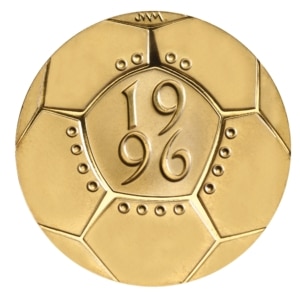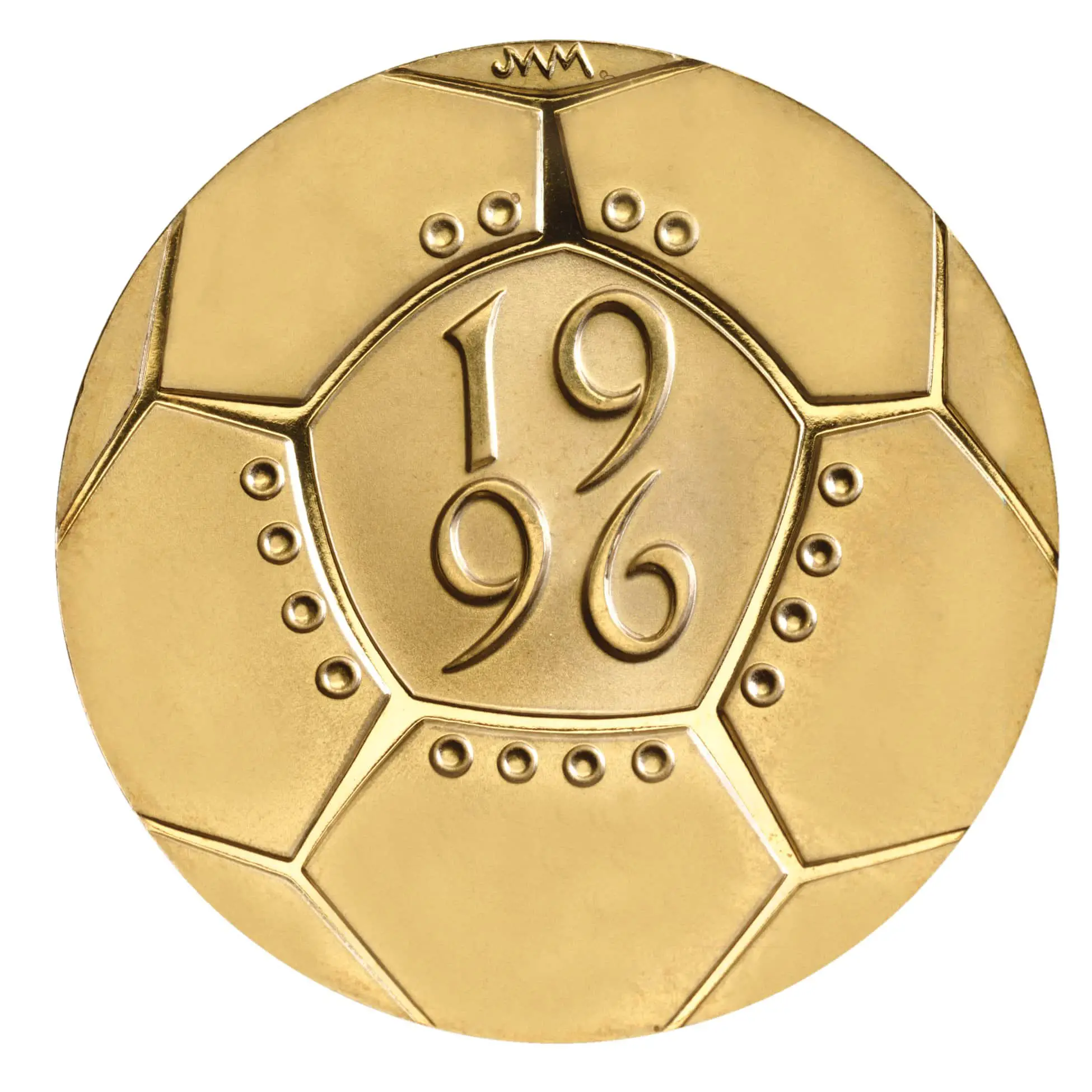The 1996 Football £2 coin is a favourite amongst collectors due to its unique design and the fact that it is an ‘old style’ £2, but how much is the coin worth today?
Regular base-metal versions of the coin sell for between £5 and £7 according to sold listings on eBay in 2022, but uncirculated proof versions can sell for much more. The gold-proof version of the coin, for example, is worth around £1,000 depending on where you purchase it from.
Let’s take a deep dive into the design and mintage of the coin to see why it is sought after by collectors.
What Does The 1996 Football £2 Coin Look Like?
The obverse, or front side, of the coin, features a familiar portrait of Queen Elizabeth II. Designed by Ralph David Maklouf, FRSA, it was the third portrait of Her Majesty to be used on coins and is present on examples dating from 1995 to 1996. Surrounding the portrait is the inscription, ‘Elizabeth. II. Dei. Gratia. Regina. F.D.’, as well as the face value of the coin, ‘Two Pounds’.
The reverse side of the coin was designed by John Mills – who designed other iconic coins such as the DNA £2 and D Day 50p– and is made to resemble the iconic image of a football. Featuring the year, 1996, across two lines in the centre of the coin, areas are split into pentagonal shapes, as they are on footballs in real life.
The design also features 16 small rings surrounding the central pentagon. At the top of the design, John Mills’ initials are visible.
Somewhat unusually, the design on the reverse side of the 1996 football £2 coin extends right to the edges. Typically coin designs are bordered by an inscription or a raised bevel but this is not the case with this commemorative coin.

Another aspect that is characteristic of the 1996 football £2 coin is the concave surface of the reverse. This adds texture to the surface of the coin, creates a raised visual effect and makes it instantly recognisable.
As the only coin to be designed and minted in this way, it is, perhaps, one of the reasons why the 1996 football £2 coin is so popular amongst collectors.
The edge of this commemorative £2 is milled, meaning it has the familiar indents that you can feel when you run your finger around it. In addition to this, the words, ‘TENTH EUROPEAN CHAMPIONSHIP’ are incused, or indented, around the edge of the coin, in reference to the UEFA European Championships.
1996 Football £2 Mintage And Other Versions
The regular base-metal version of the 1996 Football £2 coin had a mintage of 5,141,350. The other versions of the coin, and their mintages, can be found below:
| Version | Mintage |
Brilliant Uncirculated In Coin Set | 86,501 |
| Silver Proof | 25,163 |
| Silver Proof Piedfort | 7,634 |
| Gold Proof (22ct Gold) | 2,098 |
It’s worth noting that a mintage of just over 5 million is not particularly low, and for this reason, the base-metal version of the coin is not considered to be very rare.
Are There Any 1996 Football £2 Errors?
Most supposed coin errors are just a myth, but in the case of the 1996 Football £2, there is in fact an error version.
The error, in this case, refers to a series of Gold Proof versions that were struck on an incorrect blank. This can be identified by the reverse surface being flat, rather than concave.
It is not known how many of these error coins exist, but they are definitely very valuable given the regular version of the Gold Proof coin is worth around £1,000 as standard.
Is The 1996 Football £2 Coin Legal Tender?
As mentioned in our guide about spending old £2 coins, the 1996 Football £2 coin is indeed legal tender.
This means that you can use it in shops or other establishments, but due to the narrow application of legal tender in real life it is perfectly acceptable for a shop owner to refuse the coin as payment.
The coin is also worth more than the face value of £2 due to how collectable it is, so it really doesn’t make any sense to consider spending it in a shop. The only alternative would be to see if a bank or post office would accept the coin, which they likely will, or to get rid of the coin in a different way.
Why Were Commemorative Coins Released?
Although the new bi-colour £2 coin is now a common sight in purses and wallets, it wasn’t released in general circulation until 1998.
Between 1986 and 1999 £2 coins were released as commemorative coins that were not made for circulation.
Notably, all the commemorative £2 coins released between 1986 and 1999 including the 1996 football £2 coin, were issued in single-colour nickel-brass, whilst the £2 coins which entered general circulation are bi-colour, featuring a nickel-brass outer ring and an inner steel-coloured disc.
Commemorative coins date back centuries, but they were first issued by the Royal Mint in 1935. At first, commemorative coins were released rarely and were only created to celebrate or remember important historical events.
As time went on, however, the commemorative coins were released more frequently and, since 2000, they have been released on a yearly basis.
At the time the 1996 football £2 coin was released, it was rare for coins to commemorate sporting events. As one of the first sporting commemorative coins, it holds a special place in the hearts of football fans and coin collectors alike.
